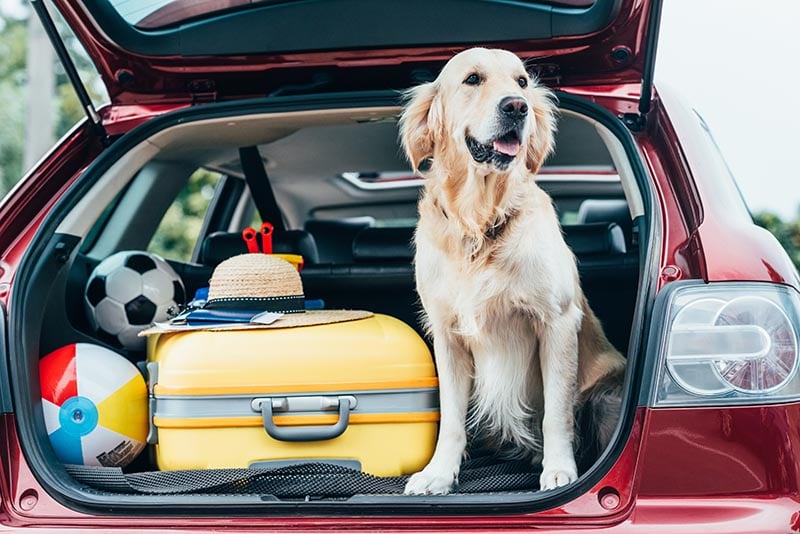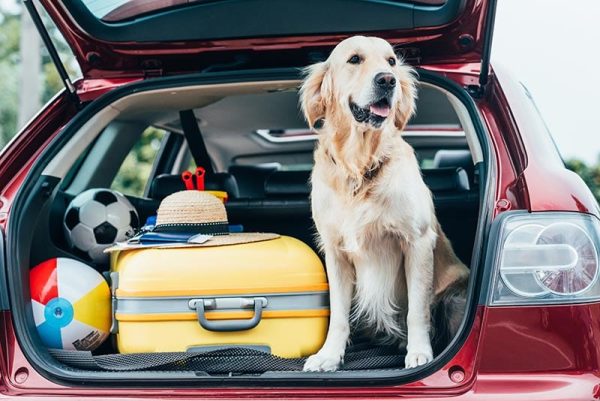Taking your dog on the road can be such a rewarding experience. Watching their excitement as they get to smell all the new smells and see all the new sights is memorable but getting prepared for this endeavor can be challenging.
We thought up 15 tips that would help most parents on their travels. Having a checklist of things to remember before you go is nice, after all. So, let’s jump right into some aspects to consider beforehand.
The 15 Tips for Making Your Dog’s First Vacation a Success
1. Vacation According to Your Dog’s Personality

Some vacations are only going to work for some dogs. For example, if you are in the car too much and your dog is incredibly rambunctious, it might not be an enjoyable experience for anyone.
Knowing the appropriate age, maturity level, and overall personality of your dog can help you determine what vacations are compatible with them. You’ll want to ensure that all aspects of the vacation will work for your dog, including hotel stays, activities, local dining, and other tourist attractions.
2. Plan Ahead
Planning ahead is crucial when bringing your dog along on the trip. Every place has different pet policies, which can impact the activities on your trip. So go ahead and map out your travels, and make sure that everything you want to do is pet friendly.
Some locations will have doggy daycares if you want a night in town with your sweetheart (without your pooch.) Just research the facility in its entirety to make sure it’s a suitable selection.
3. Book Pet-Friendly Locations
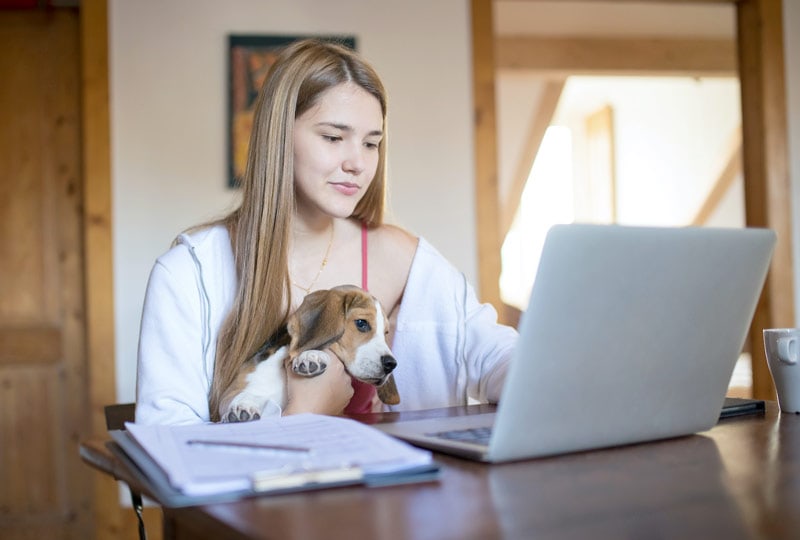
If you’re making reservations, you’ll want to be sure you can take your dog to all the events. Everything from the hotel to the festivities, you need to brush up on policies and rules related to dogs in the area. Thanks to joint efforts across the web, it’s easy to browse pet-friendly hotels and businesses online.
If you need help finding the info, feel free to call the location directly for answers.
4. Bring Your Dog’s Favorite Items
You won’t want to hit the road without making your dog comfortable. Bring some of their favorite items along to soothe them on your way. Favorite blankets, favorite toys, favorite treats, you name it. Bringing a piece of home with them can help relax the mood.
5. Take Frequent Breaks
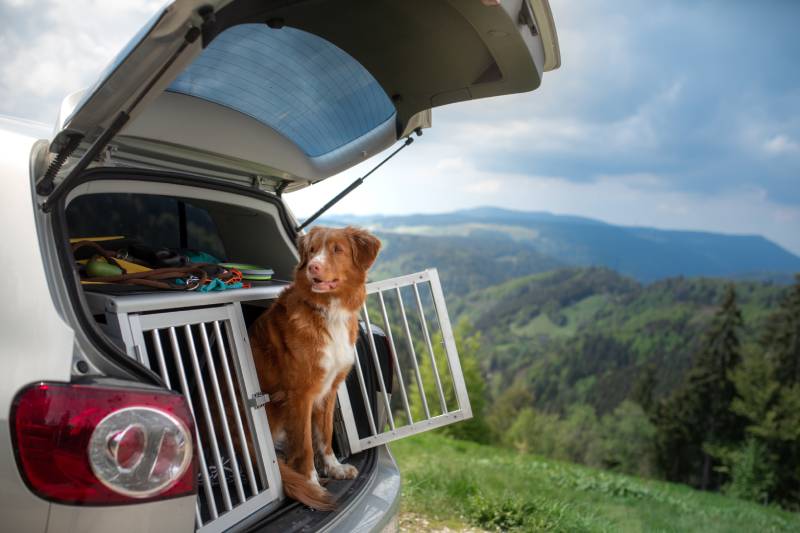
Make sure to stop frequently to let your dog go to the bathroom. It’s also best to let them get out and stretch their legs, especially on long trips. There will be plenty of rest stops, dog parks, and other fun activities along your way, so you can use the information you have from your travels to pre-plan stops.
6. Reassure Your Dog
Your dog may be nervous on their first outing. This is entirely normal and to be expected. Always be by your dog’s side to reassure them everything is okay. After all, they bond with you and trust you more than anything else.
Ease their mind if they’re getting a little too frantic or seem concerned about what’s going on. This is all very new, but it will be a pleasure soon enough. You just need to give them lots of confirmation along the way.
7. Make Sure ID Tags and Shots are Up to Date
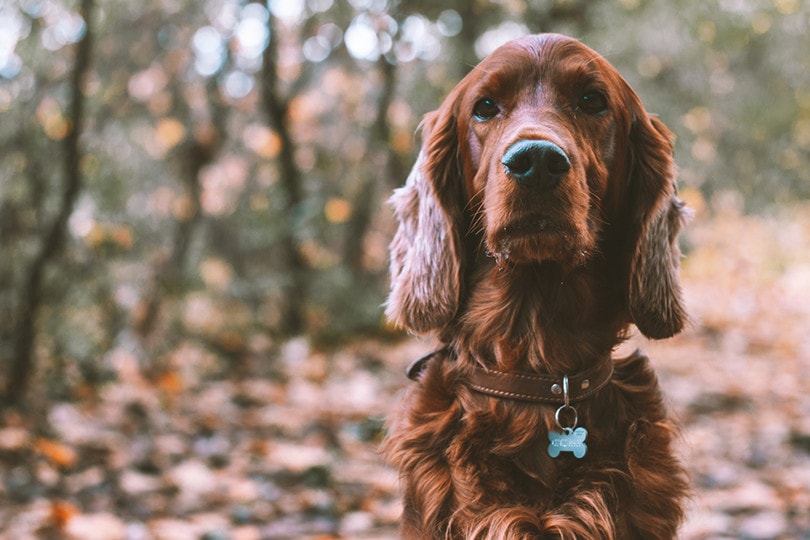
You’ll definitely want to make sure any identification is up to date. It would help if you had the proper tags on your dog’s collar and all of your microchipping information is current. Plus, you must ensure they are updated on vaccinations to prevent any transmission to or from your dog.
Try to squeeze in a vet visit to get up to date and check overall health before departure.
8. Opt for a Reliable Harness and Lead
As you probably already know, it’s best to walk your dog on a lead and harness rather than a collar. Your dog can easily slip out of a collar with enough motivation. It can cause significant neck strain if your excitable dog is also jerking or tugging on the leash.
Get your pup a harness that fits perfectly, providing reasonable control, comfort, and visibility. Chewy has a wide selection of awesome lead/ harness combos, like this Best Pet Supplies Voyager Dual Attachment Outdoor Harness.
9. Consider a Backpack

If you have a smaller breed, you should invest in a backpack. If you’re hiking out on trails or going on long trips on foot, their little legs might tire out. There are tons of comfortable and versatile backpacks on the market for smaller breeds.
Even some medium and large breeds can be toted around from time to time. So, it’s definitely worth looking at sites like Chewy. They have awesome choices like this Kurgo G-train Carrier.
10. Get Collapsible Food and Water Bowls
Just like you stop for snacks at the gas station, your dog will want to eat and drink during the road trip. Collapsible food and water dishes create a quick way to feed your dog and then store the contents away. These collapsible bowls fold flat for storage-friendliness.
This is a really great silicone set we think you’ll love: the Frisco Travel Collapsible Silicone Dog Bowl.
11. Bring Snacks, Fresh Water, & Chow

Your dog needs to eat on the road too. Prepare their food, snacks, and freshwater to have on the go. After all, you’ll need something to put in those collapsible bowls. If you give your dog fresh food, it might be challenging to keep it cool.
Ensure you bring enough ice packs and coolers to keep the packs of fresh food mostly frozen. If you feed your dog dry kibble, you can put them in small airtight containers.
12. Stock Up on Supplements or Medications
If your dog takes any regular medications, you’ll want to pick up any refills from the vet and ensure you have them in tow. If your dog is anxious or sick, purchase supplements beforehand.
13. Get a Doggy Seatbelt
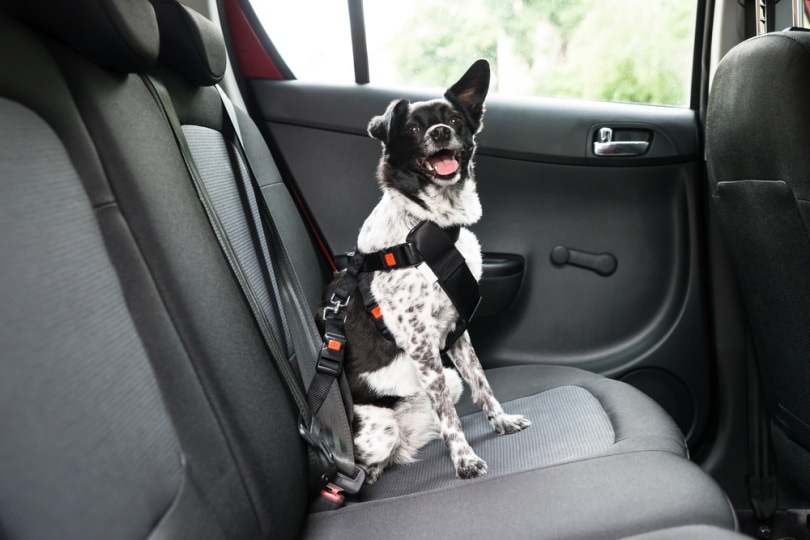
When your dog is on board, they must be safe from potential major accidents and fender benders. There are seat belt attachments and other car fittings designed to protect your dog on the go. It keeps your dog secure, so they can stay stationary if there is any disruption.
We encourage you to read reviews on the topic to ensure you get a quality, safety-tested mechanism for your pup. You can browse on sites like Chewy, which offers the Frisco Adjustable Dog Seat Belt Tether. It has attractive safety features and it’s easy to install.
14. Air Travel
If you’re traveling by plane, some airlines can be very particular about the type of carrier you bring on. Even if a carrier claims that it is airline approved on their products, this might only be for specific airlines.
So, it’s always best to check with the exact airline you chose to make sure that your purchase will pan out. After all, you’re probably on a time crunch and can’t afford to waste precious minutes trying to go through a return process.
You can browse through options for carriers, but this Sherpa Original Deluxe Airline Carrier is a functional and aesthetically pleasing design.
15. Opt for Pet Insurance

If you were traveling within the United States, you might want to get an insurance policy before you go. Not only is insurance good to have on a typical day to alleviate significant financial implications, but it’s also a nice way to provide some peace of mind when you’re on the road.
With pet insurance, you can visit any practicing veterinarian in the United States, and the facility should be accepted. To be clear, that only means that some issues will be covered. Anything can happen, and injury and illness are entirely possible.
Shopping around for pet insurance is vital to ensure you’re getting the correct policy to match your needs. It’s nice to check out a complete list of what is and is not covered so that you know the likelihood of reimbursement when you submit a claim.
We recommend you check out sites like Pumpkin, Lemonade, and Wagmo for a free quote.
Conclusion
Above all, relax and have fun with your dog. Make sure to connect with your pet on the road and share their firsts as they travel the map. If this is their introductory experience, it should be as stress-free as possible. Hopefully, your vacation is full of tail wags and happy smiles.
Featured Image Credit: LightField Studios, Shutterstock
Contents
- The 15 Tips for Making Your Dog’s First Vacation a Success
- 1. Vacation According to Your Dog’s Personality
- 2. Plan Ahead
- 3. Book Pet-Friendly Locations
- 4. Bring Your Dog’s Favorite Items
- 5. Take Frequent Breaks
- 6. Reassure Your Dog
- 7. Make Sure ID Tags and Shots are Up to Date
- 8. Opt for a Reliable Harness and Lead
- 9. Consider a Backpack
- 10. Get Collapsible Food and Water Bowls
- 11. Bring Snacks, Fresh Water, & Chow
- 12. Stock Up on Supplements or Medications
- 13. Get a Doggy Seatbelt
- 14. Air Travel
- 15. Opt for Pet Insurance
- Conclusion

